Batik Air (ID) is an Indonesian airline under the umbrella of the larger Lion Air Group. Unlike its more well known Low Cost Carrier sibling, the airline offers an onboard experience closer to premium offerings on legacy carriers.
The airline is one of the many carriers plying the Kuala Lumpur – Jakarta sector daily. I had the chance to sample the Batik Air experience on my flight from Jakarta to Kuala Lumpur late last year, and I found it to be quite decent.
Buying my tickets
The first thing to know about Batik Air is that there are two airlines named “Batik Air” in existence. There is Batik Air (Indonesia), and also the Kuala Lumpur based Batik Air Malaysia (OD) – formerly known as Malindo Air. Both airlines maintain separate websites, but sell tickets on each other’s flights given their ties under the Lion Air Group.
I booked my Batik Air Super Saver fare tickets directly from their website. The airline offers pretty generous check in baggage allowance, with 20kg for Economy Class and 30kg for Business Class. Cabin bag allowance in Economy is a 7kg bag + 1 laptop bag or 1 handbag; and 2 bags totaling 10kg + 1 laptop bag or 1 handbag in Business Class.
I should note that not too long after I bought my tickets, the Batik Air (Indonesia) website link was tweaked to redirect visitors from out of Indonesia to the Batik Air Malaysia site instead. I could only access the Batik Air (Indonesia) website when connected to an Indonesian network in Jakarta. This does mean that if you’re trying to book a flight on Batik Air Indonesia, you will have to do so from the Batik Air Malaysia website instead which still carries the “Malindo” domain. I get that both airlines are under the same corporate group and do code share with each other, but this is a rather odd way of doing things.
Both Batik Air and Batik Air Malaysia operate their own frequent flyer programs, but neither are particularly useful.
Departure from Jakarta Soekarno-Hatta International Airport Terminal 2
Batik Air uses Terminal 2 at Jakarta Soekarno-Hatta (CGK), which alongside Terminal 1 is the designated home for low cost carrier operations at CGK. Both terminals are more or less mirror images of each other, consisting of 3 departure concourses connected to 3 corresponding departure piers. All of Batik Air’s international operations, including its check in concourse, are housed in pier 2F. For added security, only ticketed passengers are allowed into the check in concourse.
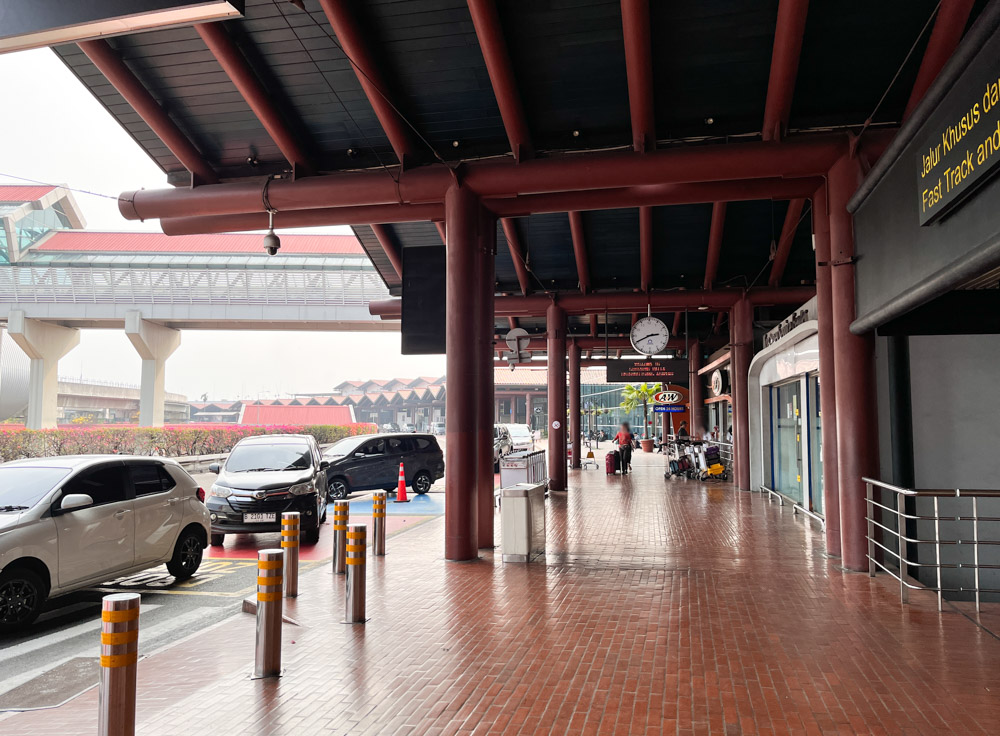
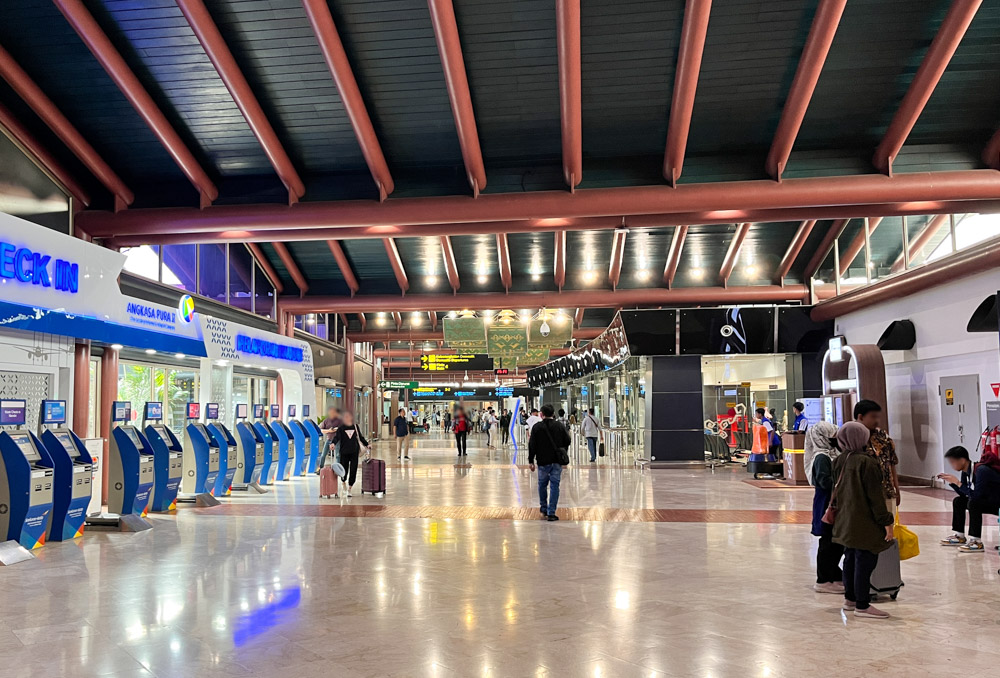
While the check in concourse is cavernous and houses a long line of counters, the line moved slowly and I ended up spending close to 30 minutes in the queue. The actual check in was swift, and only marred by the passengers checking in at the counter next door accidentally putting their bags on the belt right after mine. First time flyers I suppose.
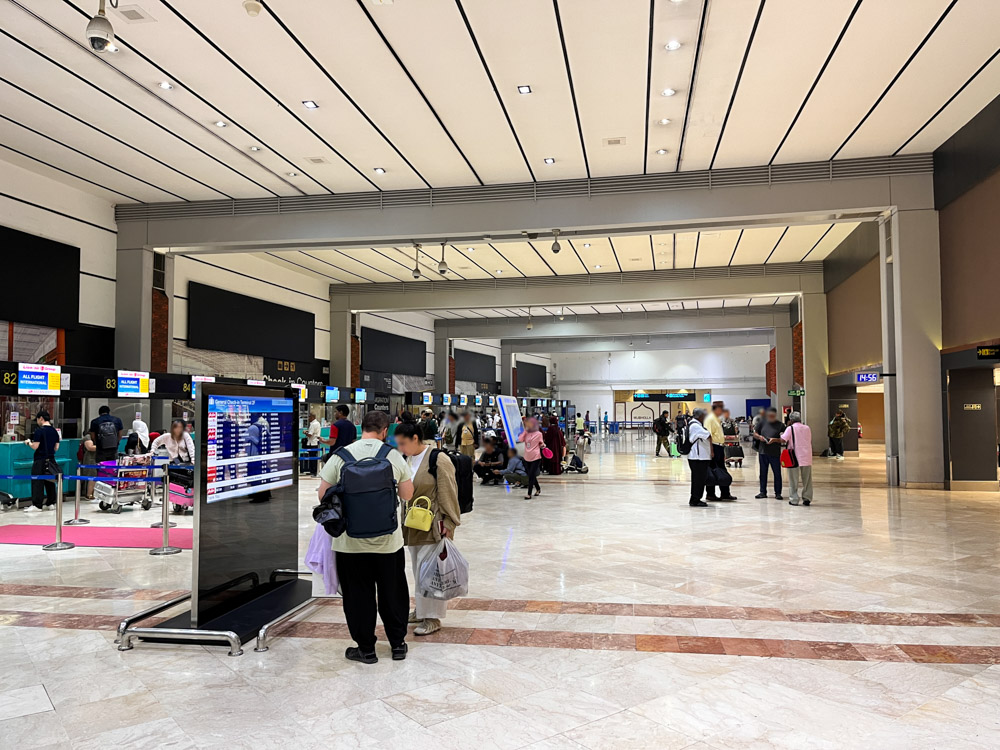
Departure immigration was very fast, and I was airside in less time than it took for me to queue and check in. While Terminal 2 as a whole is substantially sized, pier 2F’s internal layout is separated from piers 2D and 2F due to the latter piers’ handling of domestic operations. This means you don’t actually have much to do once airside, as the pier 2F area is quite small.
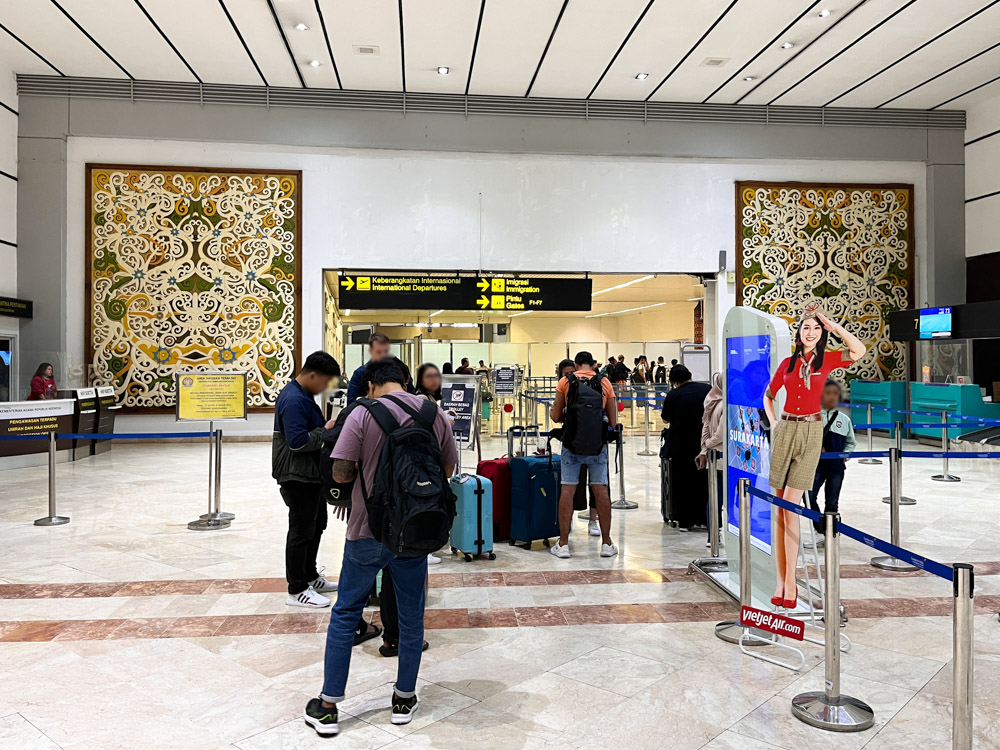
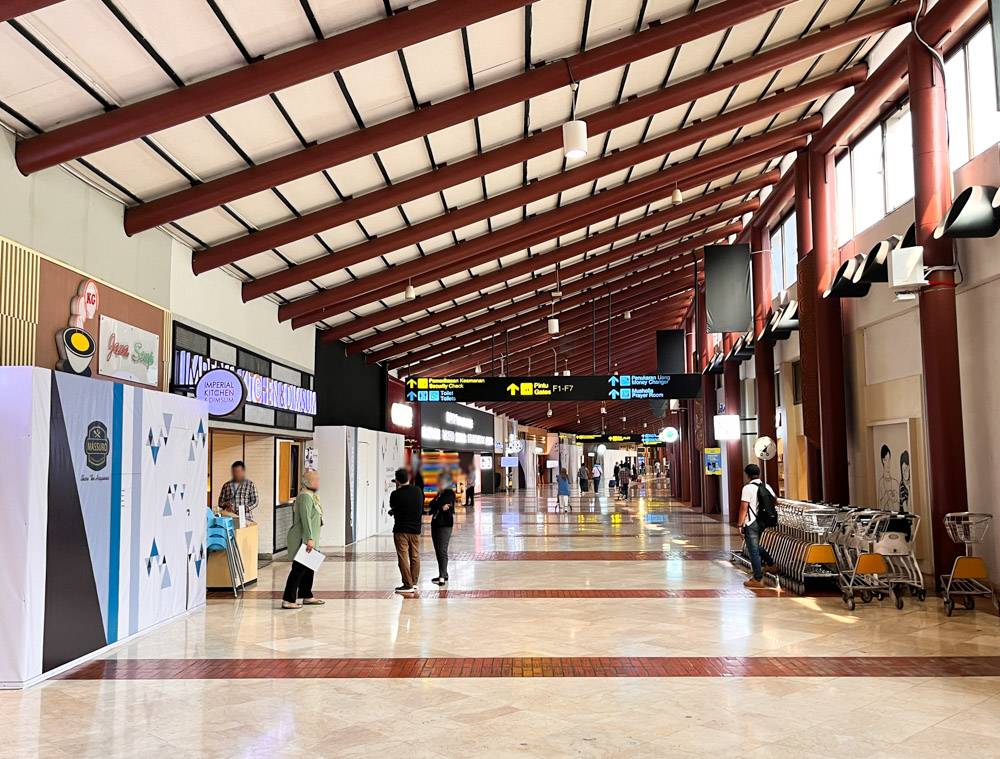
Something I’d like to note here is that both CGK Terminals 1 and 2 were built in a distinctive Javanese vernacular architecture style. If you have time to spare, I do recommend making the effort to take a closer look at the architectural features. The boarding gates in particular were designed to resemble Javanese pendopo and joglo, which isn’t something you’ll see anywhere else.
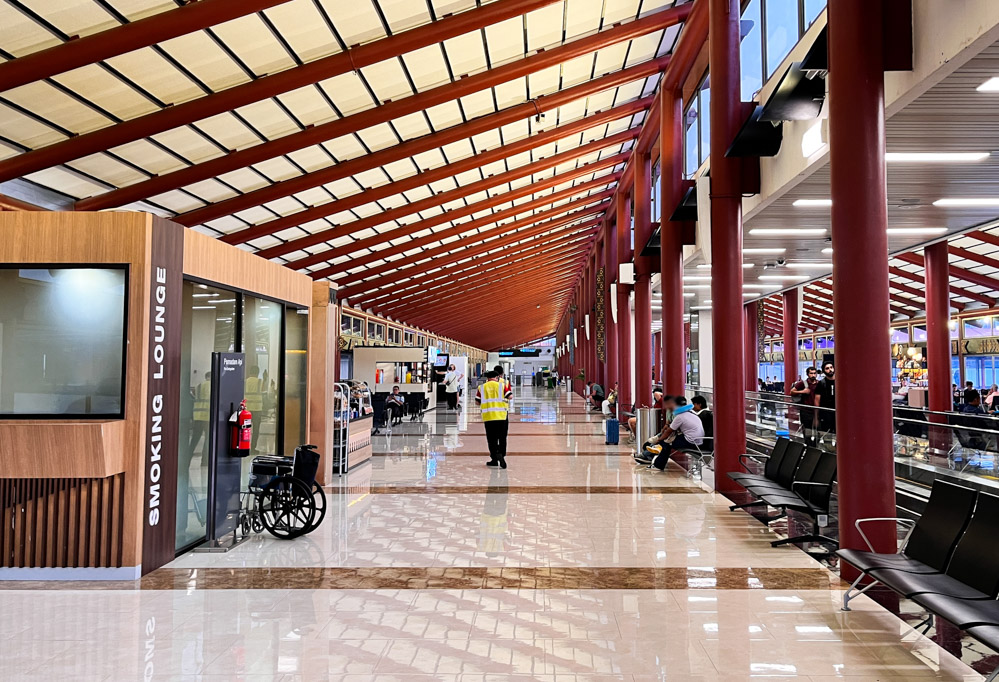
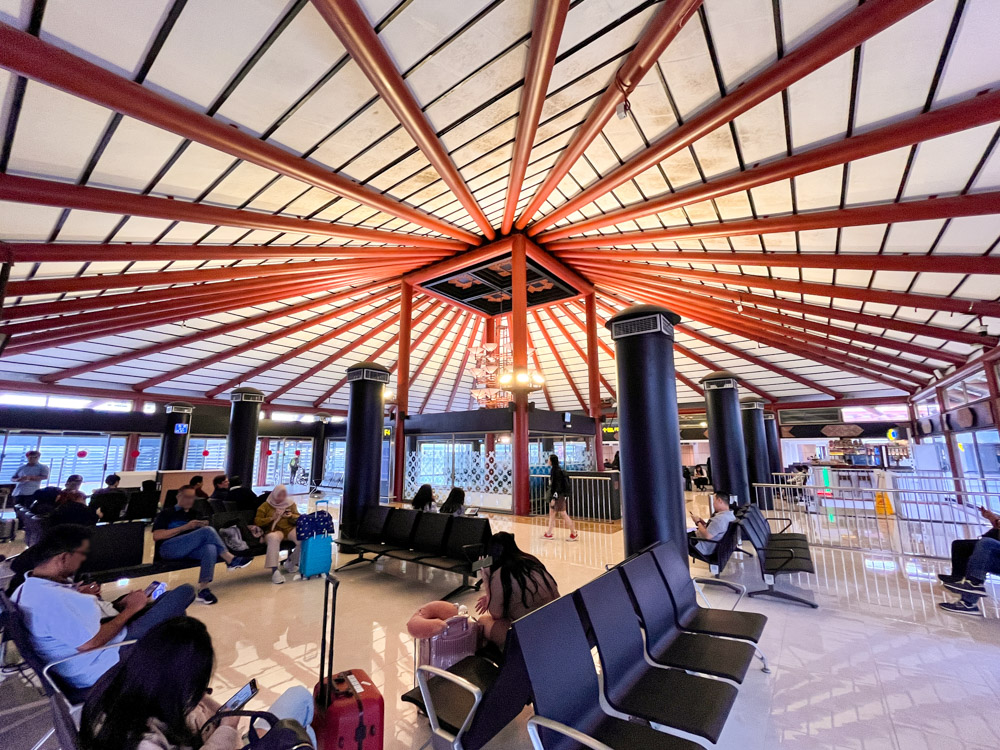
Each pier houses 7 boarding gates originally connected to each other by a covered walkway. This has since been tweaked, as the walkways have been expanded to house more seating for the gates, resulting in a bright and modern waiting area.
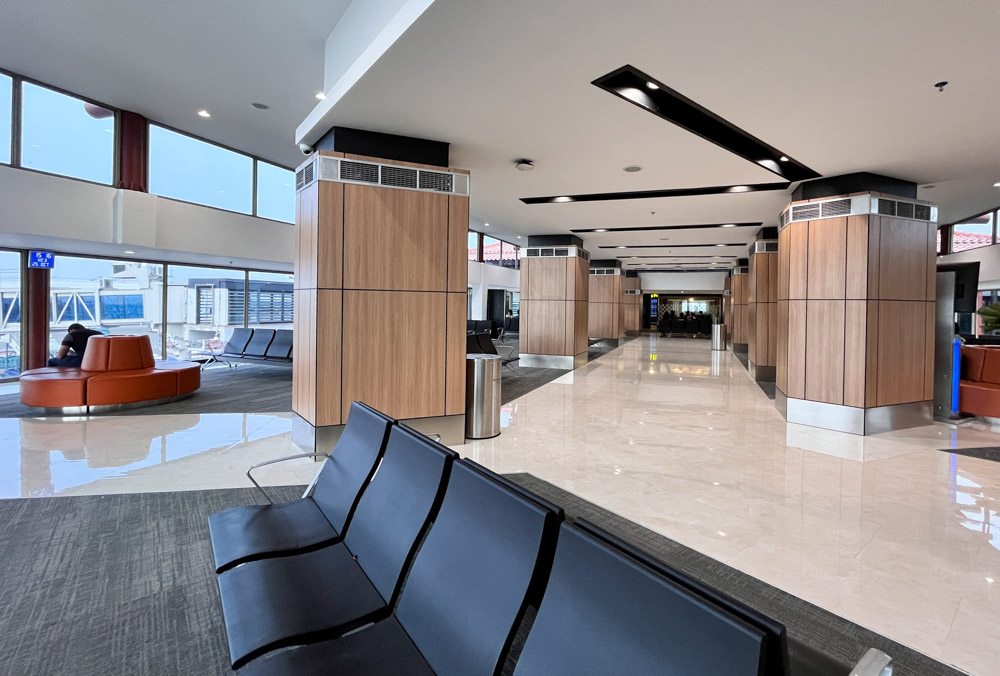
Our aircraft arrived at the gate some 40 minutes before the scheduled departure time of 4:10 pm which nevertheless prompted waiting passengers to start queuing for boarding anyway. Boarding was called at 4:05 pm, causing the boarding crowd to suddenly swell in numbers and creating 2 ad hoc (and somewhat messy) queues for the boarding pass checks.
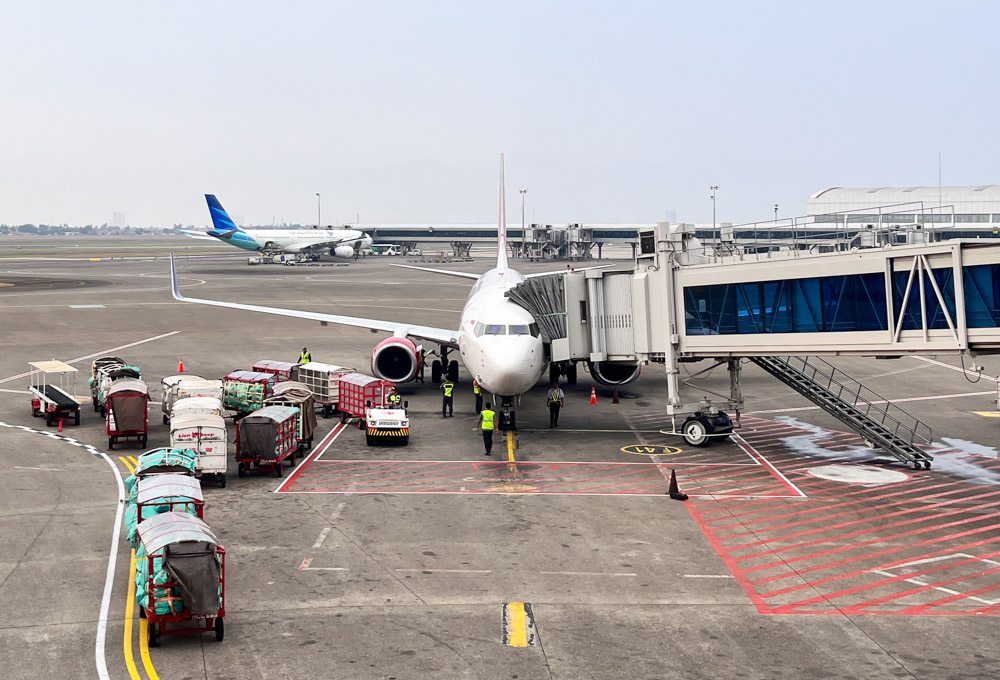
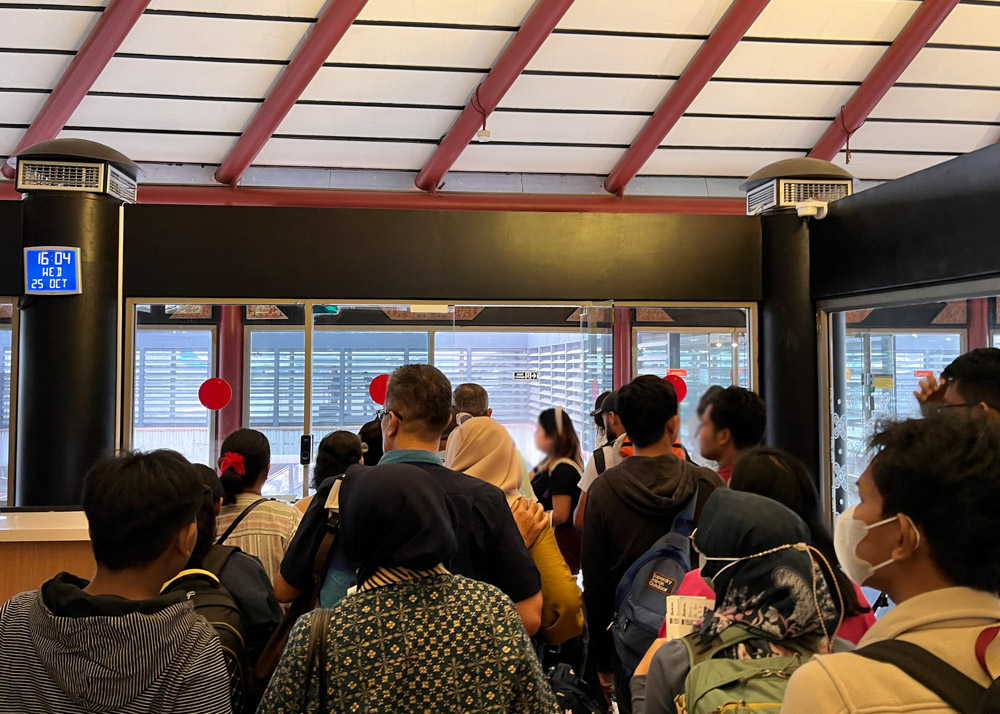
This was easily one of the less pleasant boarding experiences I’ve had, surpassed only by a Ryanair flight out of Belfast International Airport where the queue backed up onto the stairs between the ground level gate and the rest of the terminal. It was a very full flight, and with the general chaos involved it wasn’t surprising that we ended up departing some 30 minutes late.
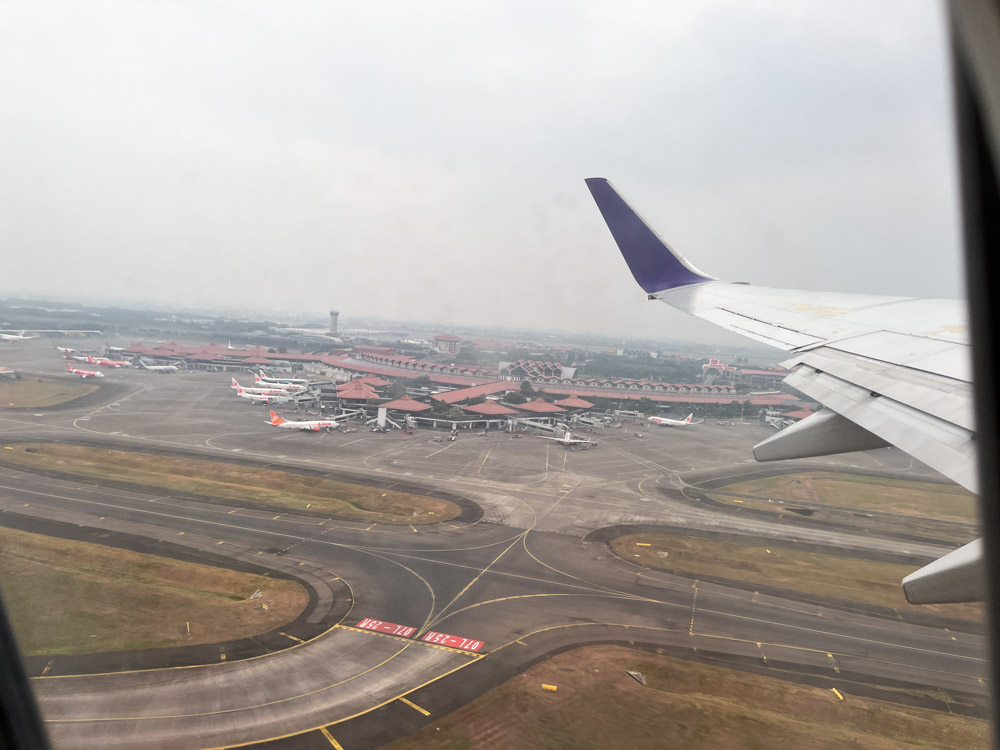
Cabin & Onboard Amenities
Our flight was operated by 9 year old PK-BGJ, a Boeing 737-800 formerly operated by Garuda Indonesia. Batik Air acquired this aircraft in August 2022 and retained the original Garuda 2-class interior but reupholstered in the Batik Air corporate colours. The result is a hybrid Garuda-Batik Air interior nicely suited for flights around the region and doesn’t differ too much from the standard Batik Air cabin.
Batik Air (former Garuda Indonesia) Economy Class
The aircraft is outfitted with 150 Economy Class seats in a standard 3-3 configuration, with 31 inches of pitch. This is the exact same layout as in all existing Garuda Indonesia B737-800s.
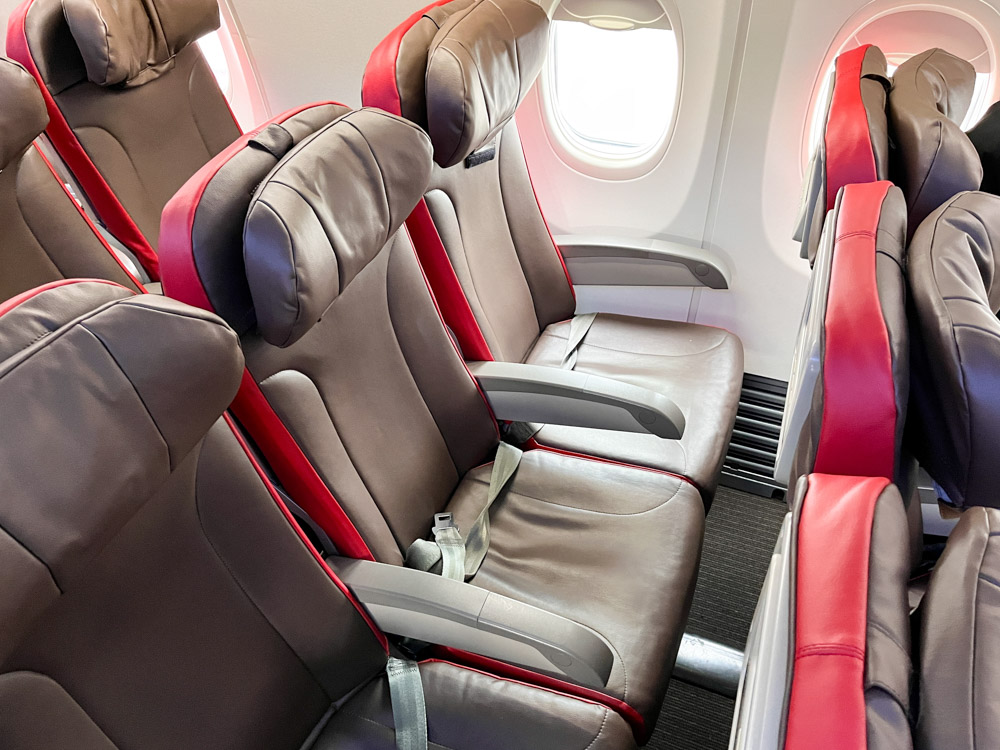
Seatback pockets contain 2 items – a safety card, and a prayer card containing travel prayers from all 5 of Indonesia’s officially recognised religions.
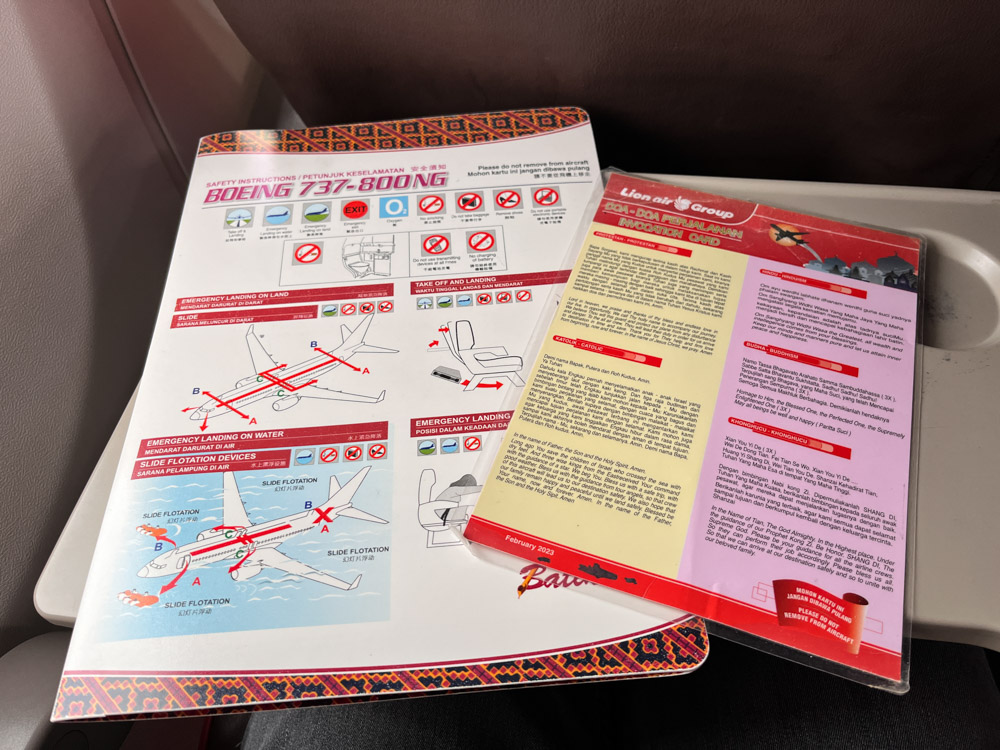
The seats themselves are comfortable enough for the short trip, but I did note that my headrest felt oddly empty as if the stuffing or padding had been totally removed. The fit and finish of these seats also felt a bit sloppy as there were some oddities like stray velcro straps hanging from the headrests. I also felt like the seats could use better cleaning, as my seatback table had what looked like ink stains on them.
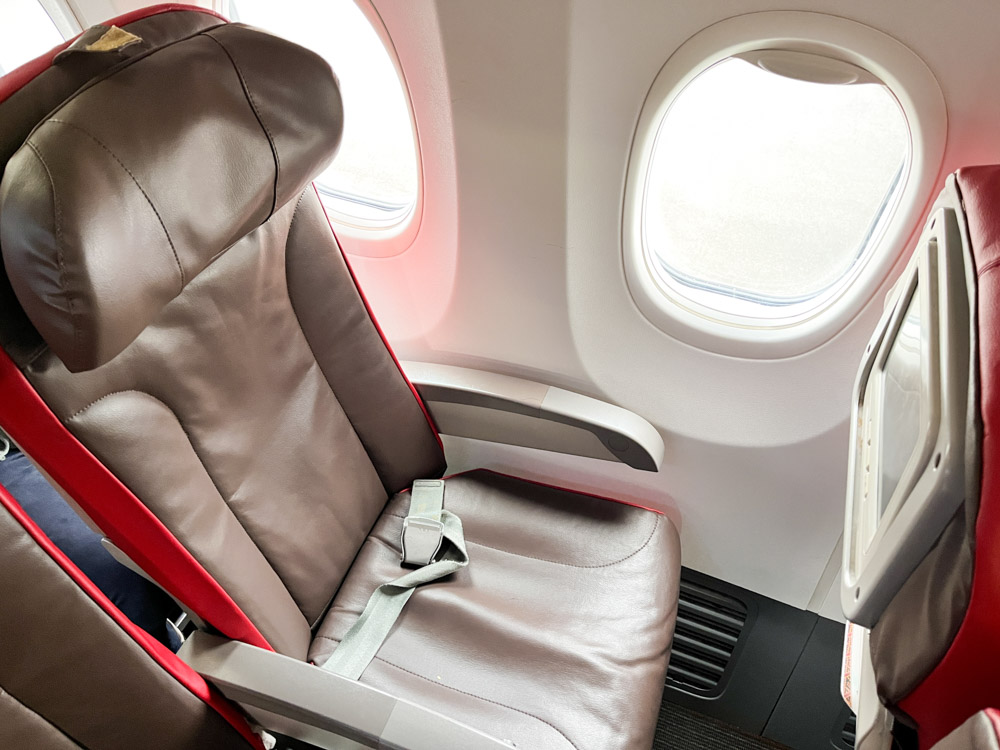
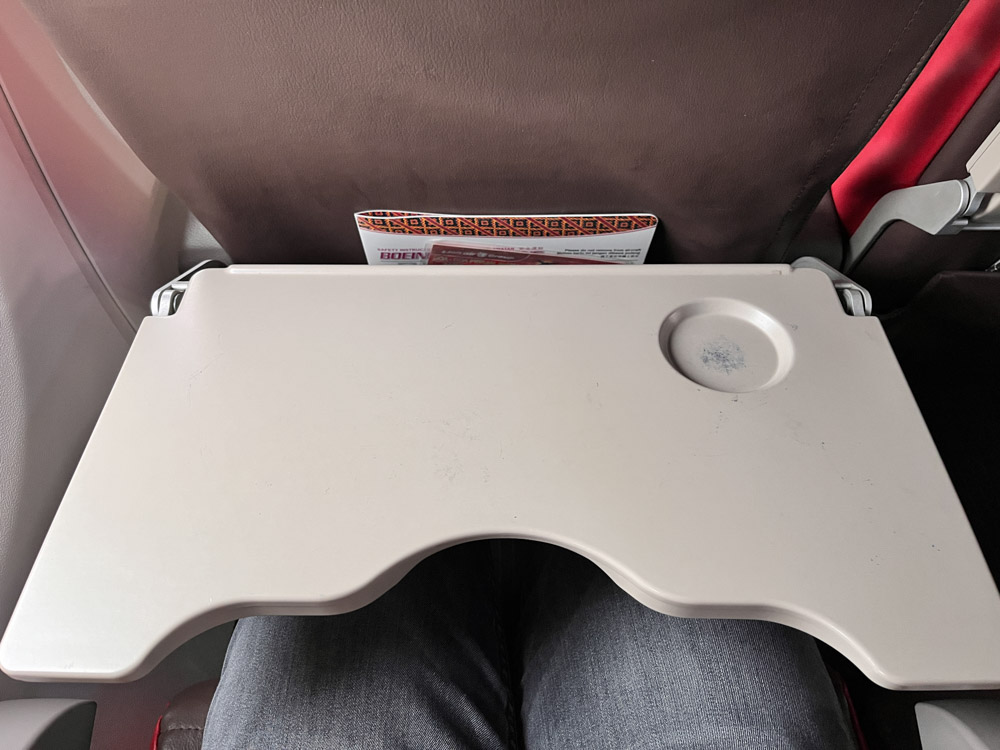
Batik Air markets itself as offering a premium product with frills like onboard catering and inflight entertainment. The airline chose to retain Garuda’s IFE hardware, but didn’t actually install its own IFE software as the system remained off throughout the entire flight. Instead, Batik Air is apparently installing onboard streaming via an app named “Tripper” that isn’t actually advertised onboard the aircraft. Passengers get an easily missed email before the flight containing a reminder to download the Tripper app. I actually missed this email and only discovered it after I completed my flight.

Batik Air (former Garuda Indonesia) Business Class
The front of the aircraft features 12 Business Class seats in a standard 2-2 configuration. These are pretty basic recliners originally installed by Garuda, and are now upholstered in Batik Air’s 2-tone cream coloured covers.
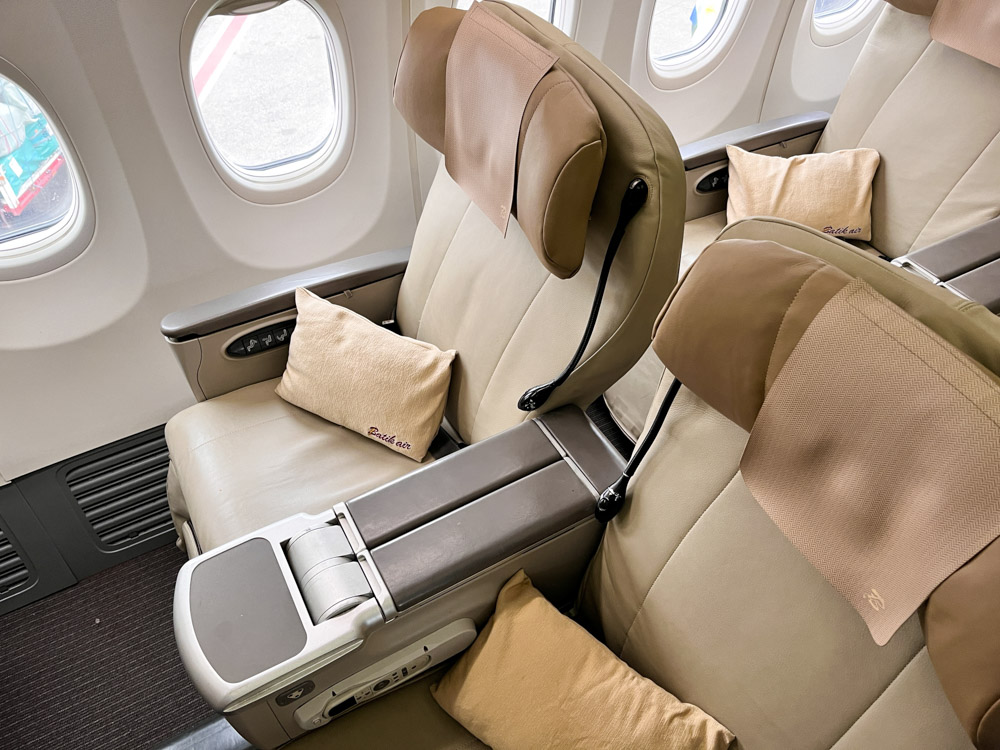
There isn’t much difference between these former Garuda seats and Batik Air’s own Business Class recliners, so the experience will be largely identical to the rest of the Batik Air fleet.
Onboard Catering
Batik Air offers a snack on this short 2 hour flight to Kuala Lumpur, consisting of an apple pastry, a chocolate muffin, and a small “batik” branded cup of mineral water. It’s nothing fancy, but is perfectly adequate for this short sector.
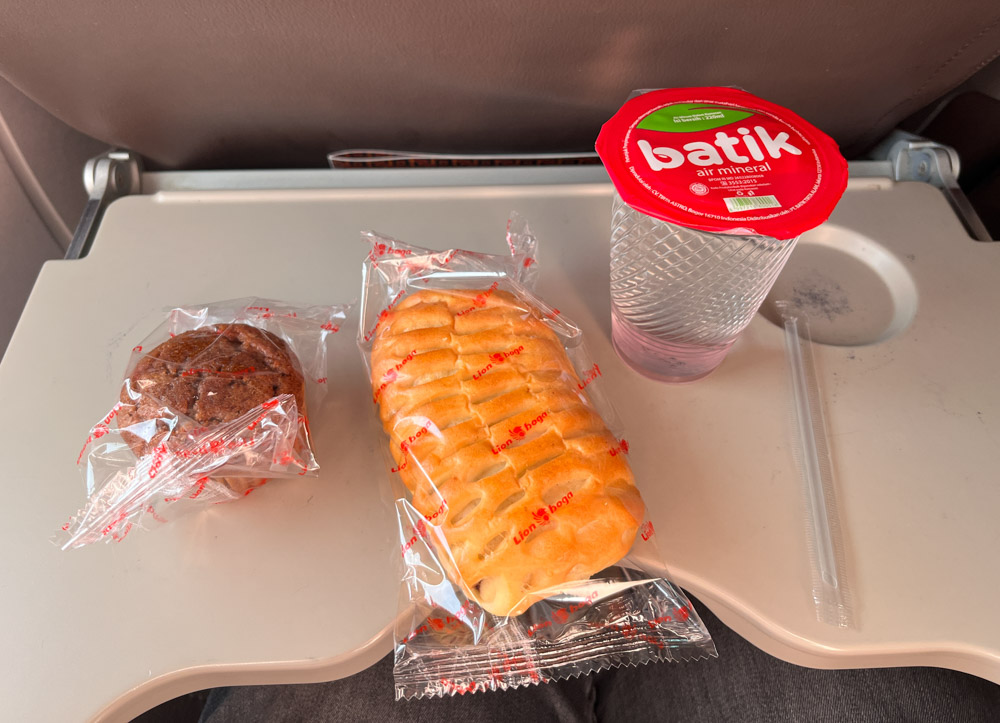
Arrival at Kuala Lumpur International Airport
We made up some time en route and landed at KUL some 19 minutes later than scheduled. All Batik Air and Batik Air Malaysia operations are centralised in Terminal 1, making for an easy transfer experience.
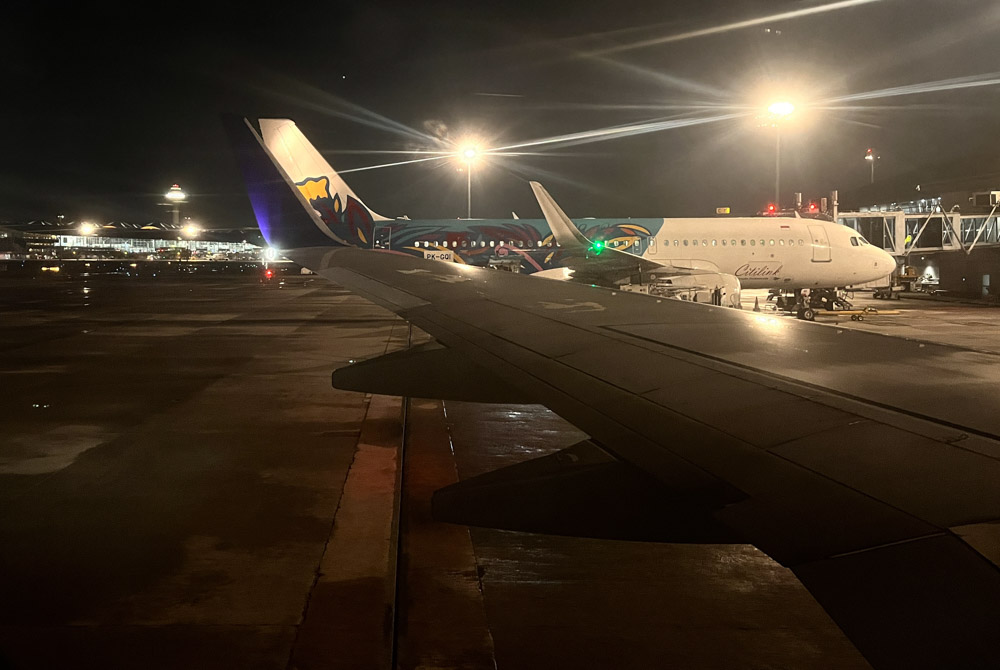
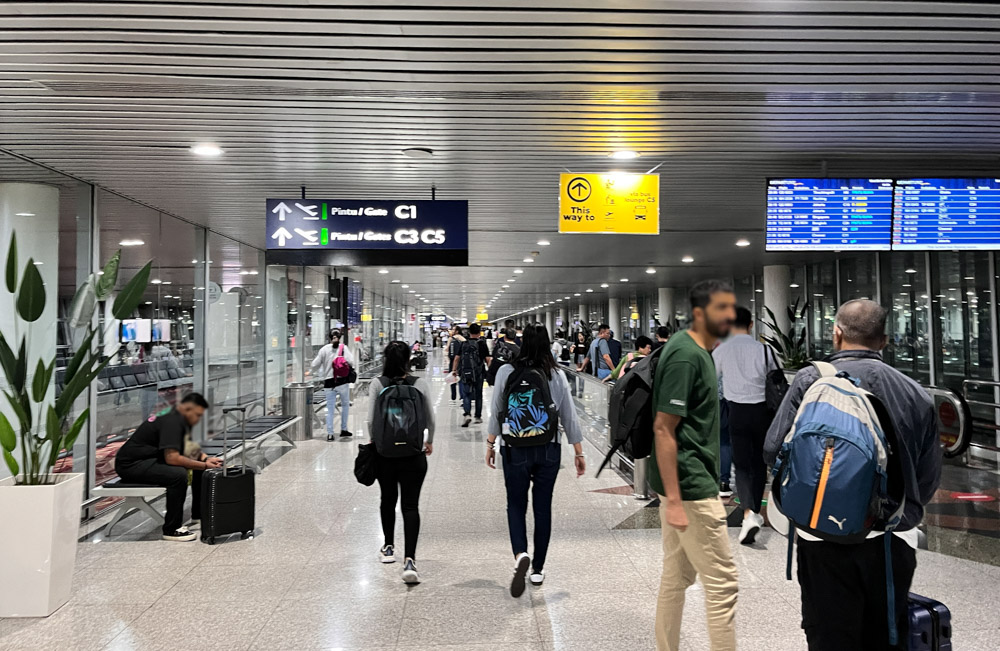
Our aircraft parked next to a Citilink Airbus A320 in a floral retro livery, which has to be one of the more unique ones I’ve seen.
Final Thoughts
Batik Air offers a decent premium onboard product that is well suited for regional operations. What holds the airline back are the gaps in its onboard product, like the somewhat half-hearted effort to advertise the onboard IFE streaming. This doesn’t really help build a more polished image for the airline, especially when you consider its main premium competition are actually regional flag carriers like Garuda Indonesia.
That being said, the airline is still a good premium option for the reasonable price at which it sells its tickets. I definitely wouldn’t mind another flight with Batik Air.
Comments
2 responses to “REVIEW | Batik Air Economy Class from Jakarta to Kuala Lumpur”
Wow! Thank you for the detailed review! I wanted to ask if your flight was a transit flight? The reason is that I have a similar flight on December 14th, with a layover of 1 hour and 5 minutes at Kuala Lumpur International Airport (KLIA). My next flight is also with Batik Air, going to Tokyo, and it’s part of a through ticket I purchased as one (here’s the flight = [link removed]).
I’m particularly curious if you landed at Gate C, or at one of the gates in the G or H area ( https://www.ana.co.jp/en/jp/guide/prepare/airport-guide/international/kul.html ). Since I’m concerned about having enough time to make my connection, knowing which gate area your flight arrived at would be really helpful. Have you ever had a transit flight like this, with a tight layover on Batik Air? Any advice would be much appreciated!
Hi Joshua, thanks for the comment. My flight parked at the C gates, but sometimes the Jakarta flights can park at the G or H gates instead. The transit process at KUL Terminal 1 is quite straightforward (see: https://airports.malaysiaairports.com.my/en/klia1/air-travel/flight-transfer), and you don’t have to worry about central security queues as security checks are done at each gate. I’ve not done a transit at KUL before, but I’ll say that 1 hour and 5 minutes is risky but doable if you don’t have to go through Msian immigration, exit airside and re-check in. If both your flights are parked at the C, G, or H gates it shouldn’t be an issue (assuming your flight from Jakarta is on time). But if one of your flights is parked at the G or H gates and the other is at the C gates, you’ll have to factor in time for the 5-10 minutes bus ride that connects both parts of Terminal 1. Either way, my bigger concern would be whether the flight from Jakarta departs on time.